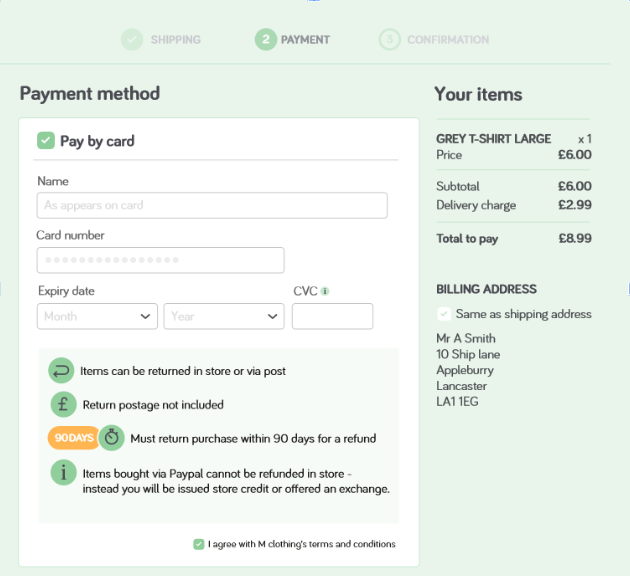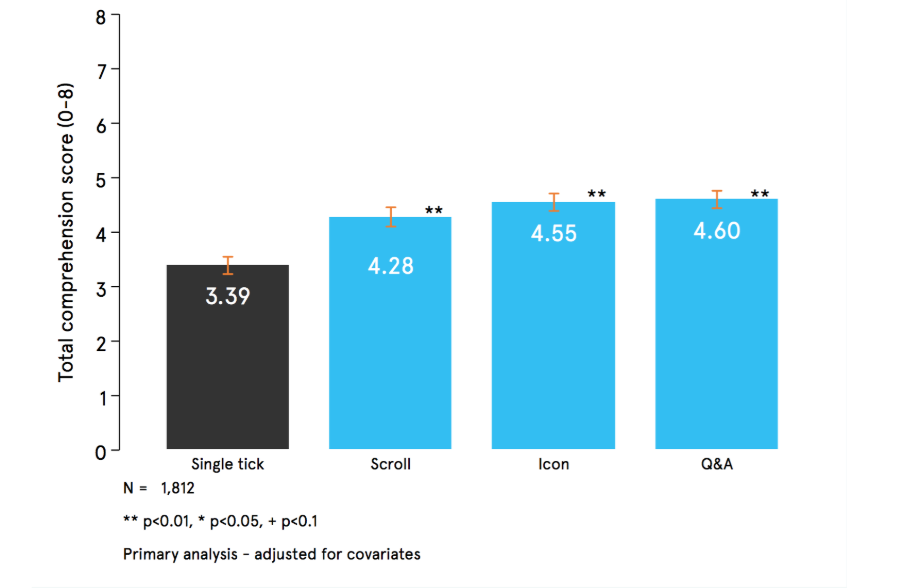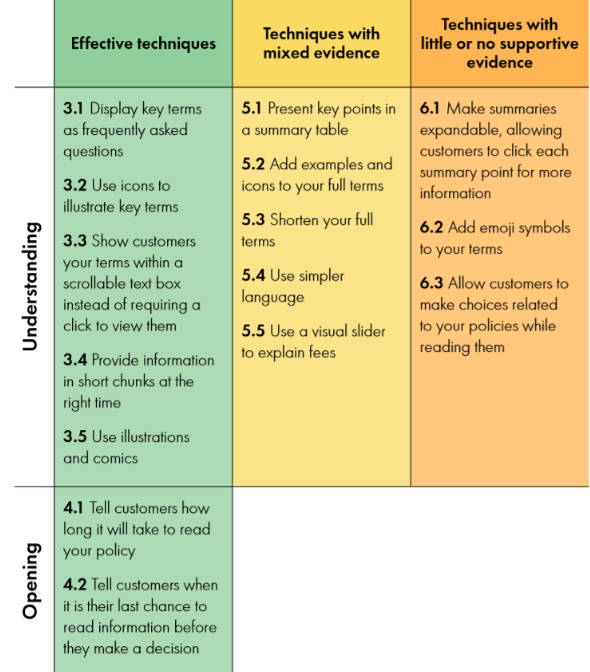Today we published our best practice guide on how to present contractual terms and privacy policies. Commissioned by BEIS, this guide is for all businesses who want to help their consumers better understand their T&Cs.
The problem with T&Cs
Terms and conditions represent some of the most complex and long-winded text that consumers come into contact with. For instance Paypal’s terms are longer than Hamlet, and it would take a little over three hours to read the terms of service and privacy notices of the five most popular social media and messaging apps.
When consumers do try to engage, the documents often seem impenetrable. Our recent paper on online harm and manipulation highlighted that privacy policies frequently require college-level reading ability, yet the UK average reading ability is much lower than this. So it may be no surprise that we often absentmindedly tick a box to ‘agree’ and that less than 1% of us click to view the full text of contractual documents online.
A lack of understanding of T&Cs and privacy notices is likely to lead to less informed consumer decisions and potential regret (if, for example, you discover unexpected early termination fees). To be useful, terms should impart information to consumers. We therefore designed experiments to focus on exactly that: increasing understanding of key terms.
BIT intervention
The project built on an experiment from our Financial Capability Lab partnership with the Money Advice Service, where redesigned webpages that highlighted key information increased the amount of information absorbed by consumers by 21% (see page 27 of the report).
Our new work with BEIS redesigned the contractual terms for six different products and services, including retail, telecoms and social media sites. We looked at a range of contexts which cover a large fraction of consumers’ online activity and vary in product type and complexity (for example, one-off purchases and rolling contracts).
In each context, we ran a randomised control trial on our testing platform Predictiv. We showed participants the same information, but presented in four different ways. One format was a real-world baseline, designed to replicate the terms of existing websites. The other three formats used behavioural insights to design alternative presentation techniques. These techniques ranged from summary boxes to reading time cues and illustrative graphics. In total, we tested 24 different presentation techniques with nearly 8,000 consumers.

Key findings
The results are rich and highly informative for all businesses operating online. Three findings stand out:
1. A number of low-cost, practical and scalable techniques can drive robust increases in understanding. Using summary bullet-points with icons – either in the form of simple statements, or as FAQ-style questions – improved comprehension by up to 36%. Key point summaries increased understanding of the information highlighted, but did not reduce understanding of the points not highlighted. Additionally, providing terms in a scrollable text box instead of requiring a click-to-view format increased comprehension by 26%.

2. Simple cues can double the number of people clicking to open terms. Just telling customers how long it will take to read a policy increased the number of people opening a policy by 105% (from 16% to 34%). Telling them it is their last chance to read the information before they sign-up to an online service increased opening by 41% (from 16% to 23%).

3. Comprehension rates were low, even when deploying the most effective presentation techniques. Across all trials, the number of questions answered correctly was, on average, only around 40-50% (or 3-4 correct answers out of 8 questions). For this reason, we also hope to explore complementary techniques for assisting consumers online, such as plug-ins which signal the quality of T&Cs and privacy policies.
None of the trials adversely affected trust nor interest in shopping with a company, which gives us confidence that these techniques can be leveraged by businesses to not only increase comprehension, but also protect consumer trust and brand reputation.
Next steps – scaling
We hope to see the recommendations of this report taken forward by organisations across all sectors, including government and regulators such as the ICO. We also hope it will kick-start an informed discussion about consumers’ understanding of contractual terms, and how firms can be held to account for giving customers low-quality, incomprehensible terms. When updating contractual terms and privacy notices, we encourage organisations to consider conducting tests to see how behaviourally-informed techniques can be leveraged to increase understanding.










